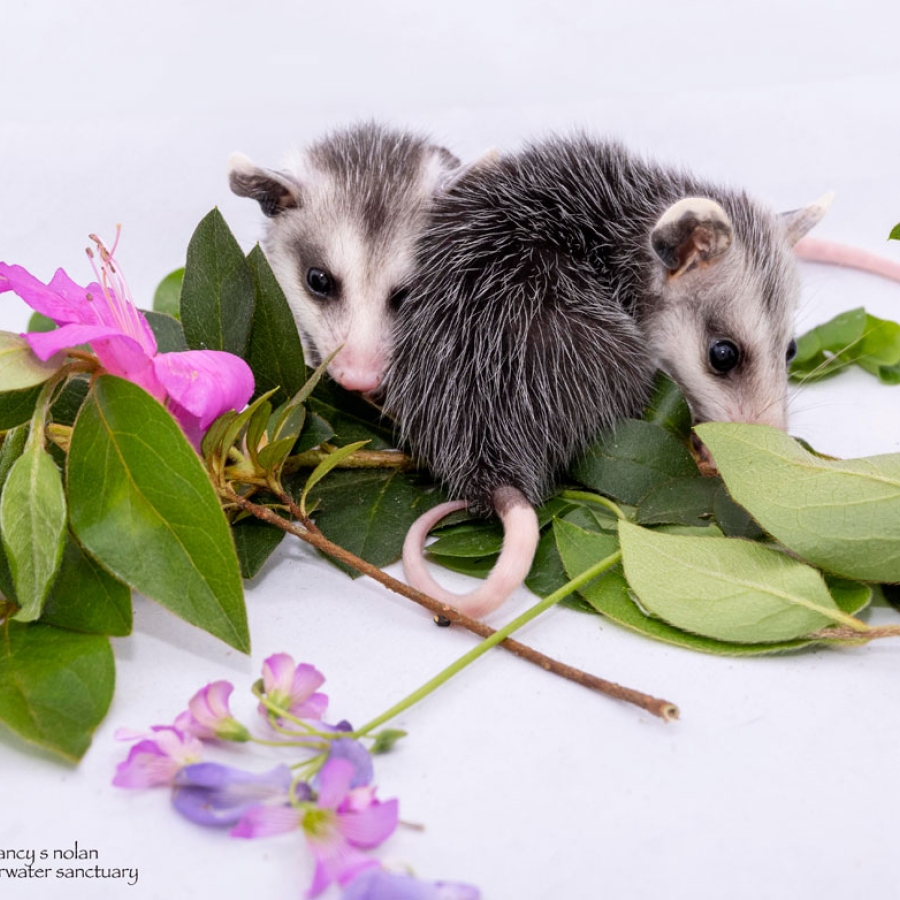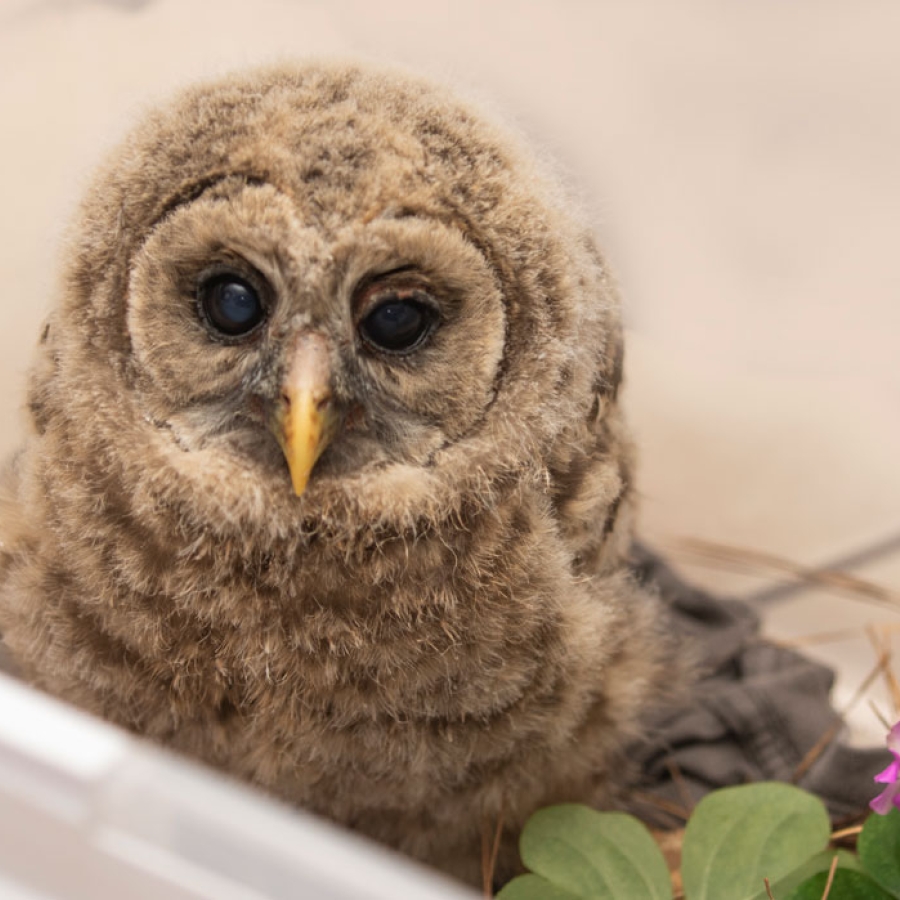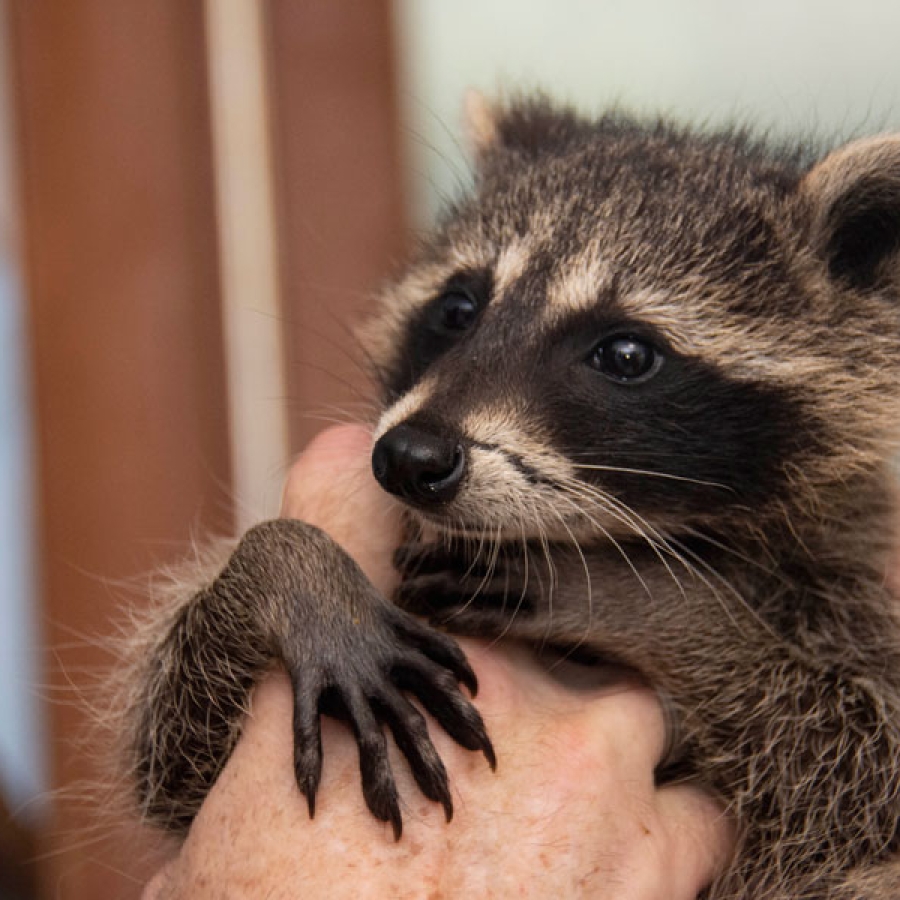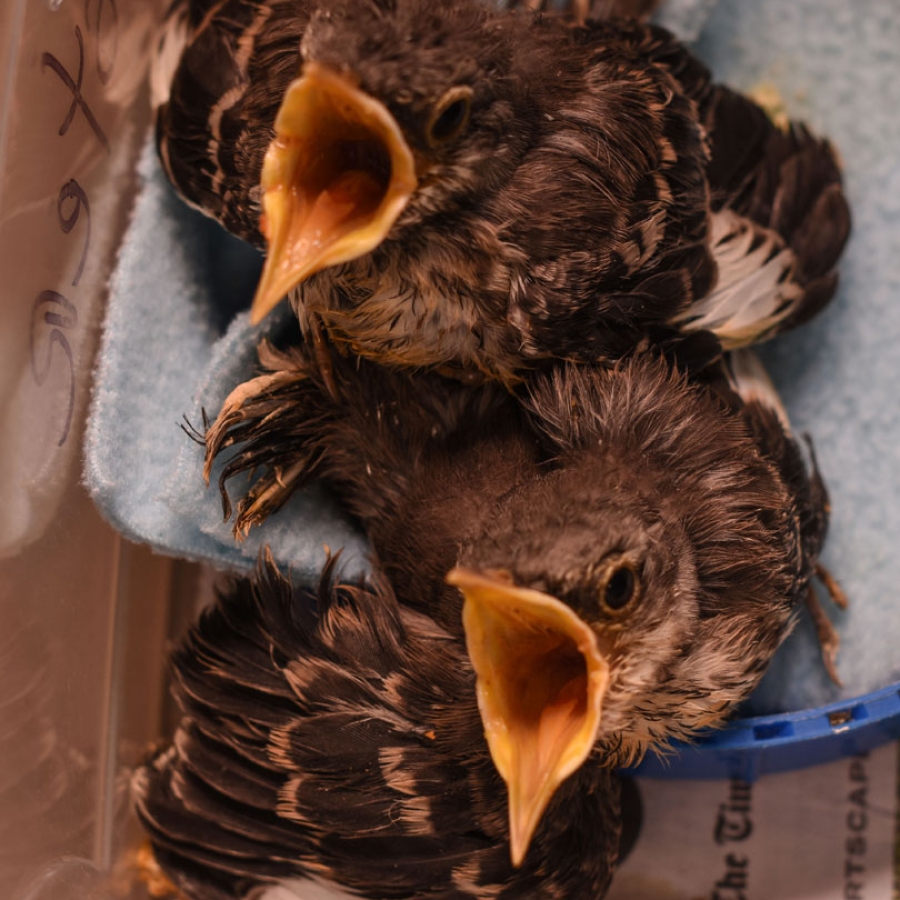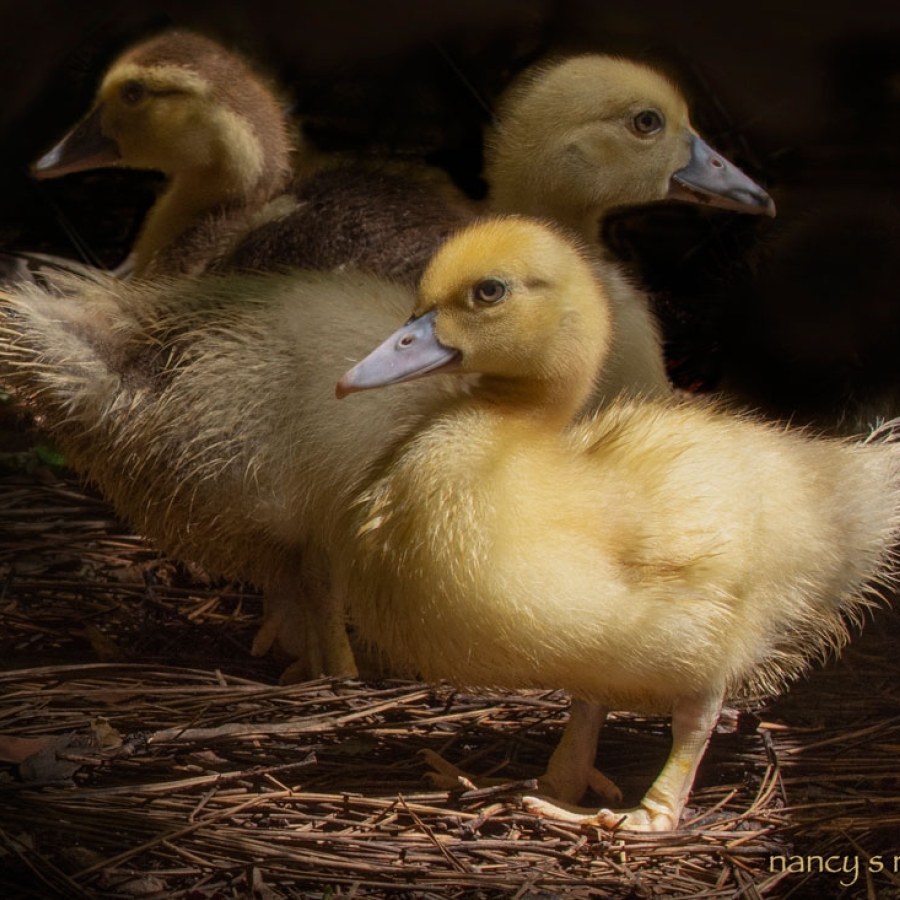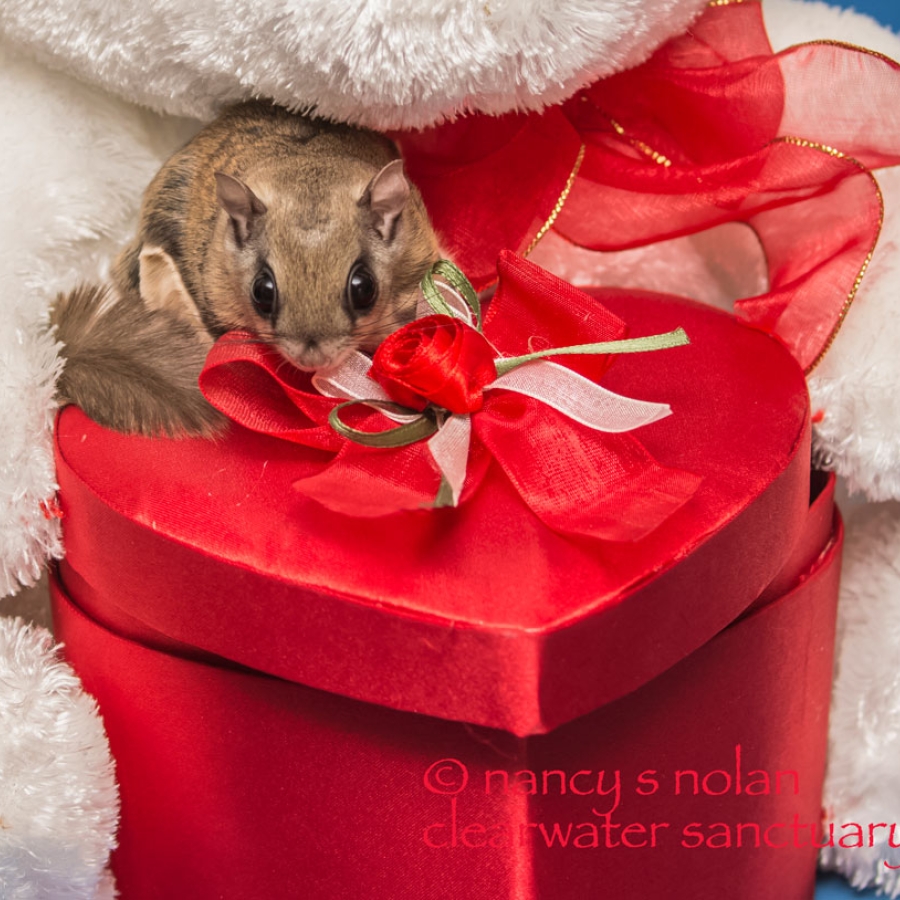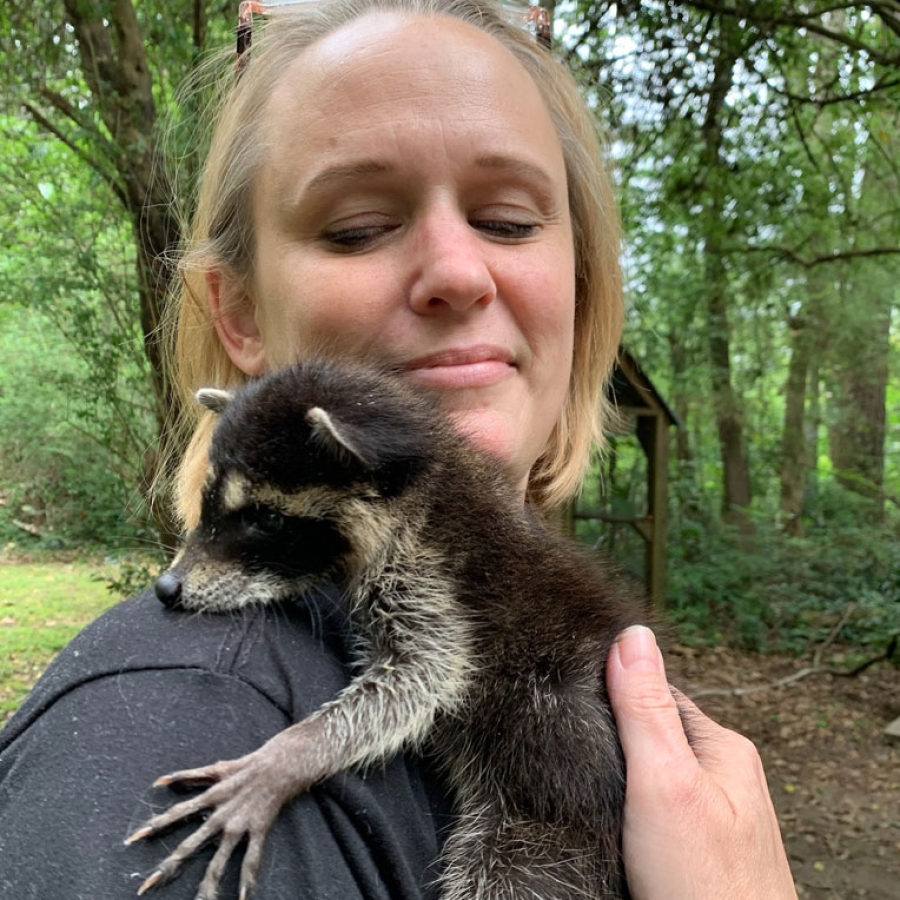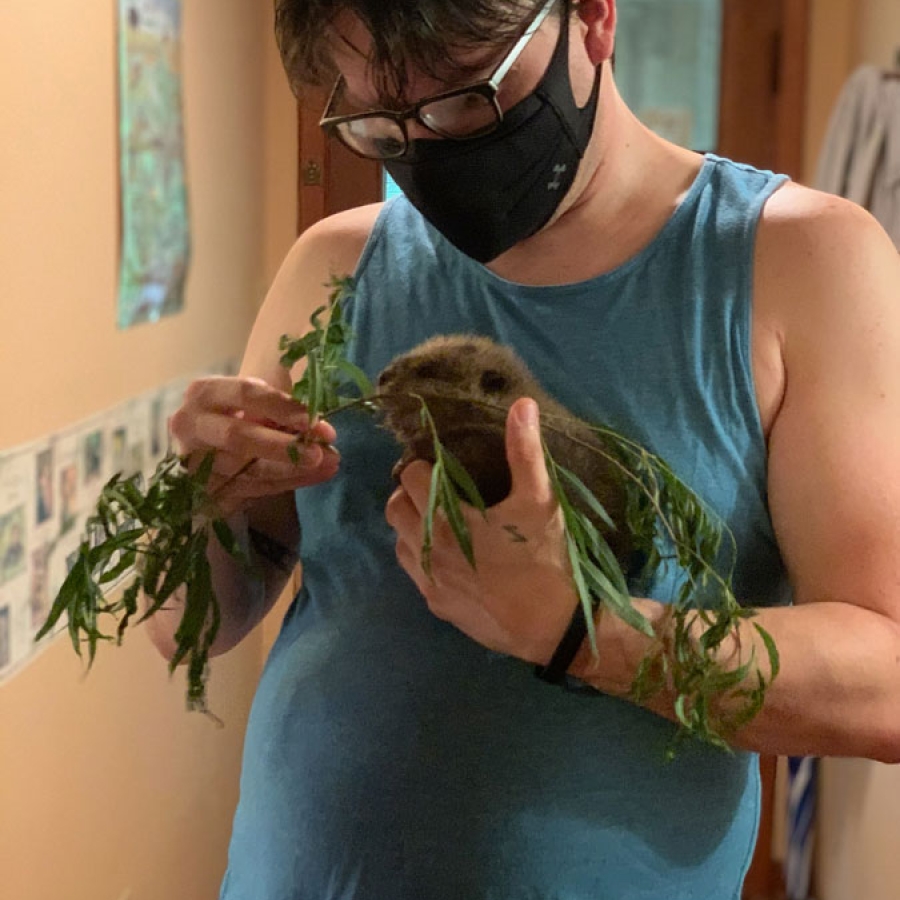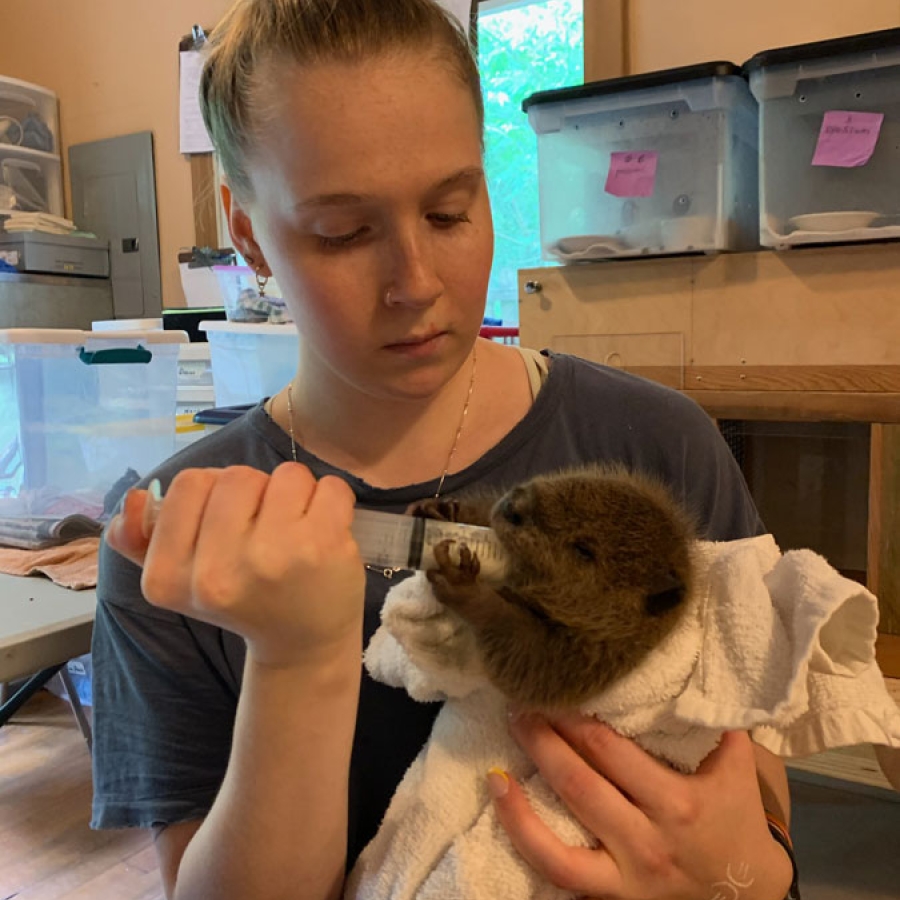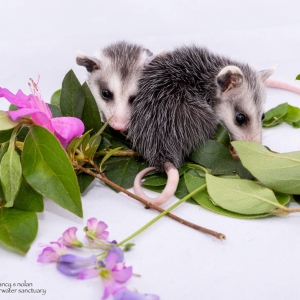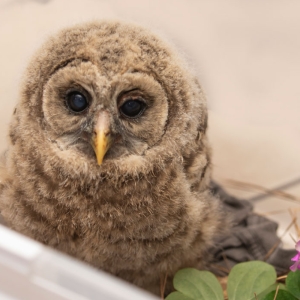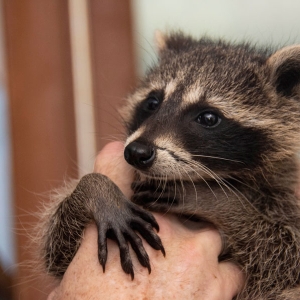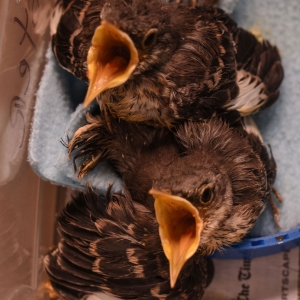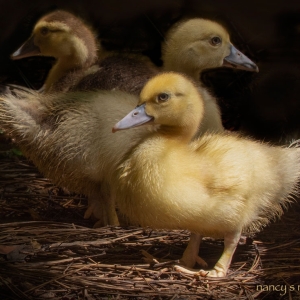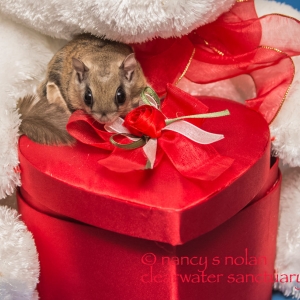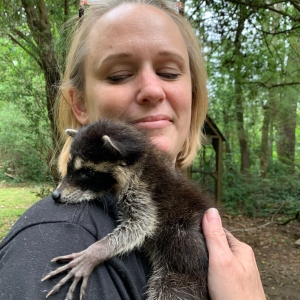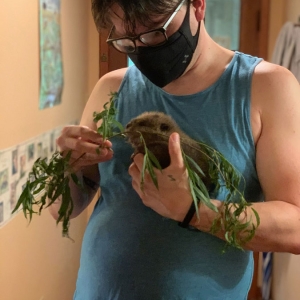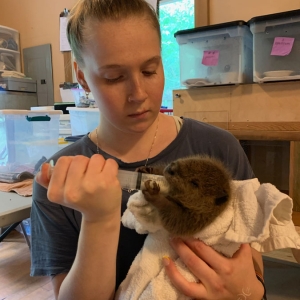Photo Credit: Nancy S. Nolan
Many of us are familiar with our local animal shelters that take in dogs and cats that are abandoned, orphaned or hurt. But what happens to wildlife in this predicament? Who helps these beautiful creatures? The Clearwater Sanctuary is just that place; it is a refuge for all life. They do care for some dogs and cats, but their priority and main purpose is to come to the aid of wildlife in Louisiana.
Clearwater Sanctuary is a 501(c)3 non-profit organization whose mission is service to our planet and the diversity of life it supports. Thriving in the midst of a green canopied forest, nourished by a spring fed river, they believe every living being on our planet deserves compassion, respect, and a chance to live to the fullest. They rehabilitate injured and orphaned wildlife and return them to nature in their secluded sanctuary. But they are also a sanctuary or people. Their mind and body wellness skills help you support well-being and compassion for yourself, and for all life on our planet.
I had the opportunity to speak with Nancy Torcson, President of the Clearwater Sanctuary, who was able to give me an in-depth view into the amazing things happening at their place. Nancy’s journey with the Sanctuary began back in the 1980’s. She has always helped animals even when she was administrator of the school board before her retirement helping get donations after their rehab center closed down.
Then after she retired, she knew there was a need to help with these animals. One day at her home on the Northshore, a raccoon come onto her deck with a injured foot. She left out food with antibiotics in them and watched as the raccoon kept coming back to eat. The raccoon also started healing. This was something very small that helped an animal survive. So she checked into getting licensed and in 1989, the Clearwater Sanctuary was established. Nancy is a State and Federally Licensed Wildlife Rehabilitation.
Since 1989, Clearwater Sanctuary has cared for over 45,000 sick, injured and orphaned animals. But in addition to being a sanctuary for animals, they have trained over 300 wildlife advocates who are now across the globe working as veterinarians, wildlife rehabilitators, and environmental scientists.
Everyone who works at the facility is a volunteer, no one gets paid. So you now this is more than training for these individuals who work and volunteer here; it is a labor of love. The team at the Sanctuary treats and cares for almost every species native to Louisiana including migratory birds and endangered animals. The hours are long, the work is hard and the people who do this need an extreme understanding on each of these species for their safety as well as the animals.
On a daily basis, they monitor hundreds of animals that roam the sanctuary until they are well enough to be released back into the wild. Nancy says, those moments are bittersweet, because you are sad saying goodbye to a creature that many times you nursed since it could not open its eyes, but the excitement and joy you feel seeing them recovered and going back into the forest is immeasurable. They accept new admissions from rehabilitators, veterinarians and animal shelters for release into the wild on our protected sanctuary grounds as space arises. In addition to working with shelters, they also work with the Audubon Institute in some cases. Nancy explained how they just released some beavers into the wild they had nursed since babies. Both of their sanctuaries are near bodies of water. The original location was in Convington, Louisiana and the new location is in Bush. Urban sprawl is greatly affecting the sanctuary which is causing them to go further out. To bring more awareness to their cause, they have a pollinator friendly garden in downtown Covington.
When natural disasters strike the area, these unsung heroes at the Sanctuary spring into action. Their team is called upon by U.S. and state agencies to help rescue impacted wildlife, and educate volunteers towards the road to recovery. They worked tirelessly during Hurricanes Katrina and Ida, the BP Oil Spill and the 2016 flood. During the devastating BP Deepwater Horizon well explosion occurred in 2010, Clearwater Sanctuary played a vital role in wildlife recovery and rehabilitation. Nancy served as Director of Oil Spill Response for the Louisiana Association of Wildlife Rehabilitators, vetting and coordinating all licensed rehabilitators applying to work at the rehab center staged to clean oiled wildlife. Clearwater staff members worked at the various Gulf outlets receiving, triaging and treating animals. Clearwater also received animals from BP which needed long term care after they were cleaned of oil. During the hurricanes, they helped house dogs and cats in addition to the wildlife temporarily until the were able to find the owners pr get them adopted.
They have many programs currently for the animals. One is their companion animal orphanage provides second chances for less fortunate animals. It’s been home to hundreds of orphaned dogs, cats, rabbits, guinea pigs, ferrets, hamsters, turtles and birds. Each new resident is accepted on a case by case basis and some are adopted into loving, private homes. Others remain at the sanctuary, where they live life to the fullest and enjoy all our planet has to offer. Their Companion Animal Trust cares for pets after their owners have passed away. They understand the grieving process of companion animals, and try to offer them the comfort and love found in their former homes. It’s particularly helpful if arrangements and visits are planned in advance. This eases the transition for the companion animal and offers peace of mind to their human family.
Nancy has many stories to. Tell about the sanctuary but one particularly funny one was she had to give a speech and was winning late. She checked on a baby skunk before heading to the meeting and accidentally got sprayed. Without any time, she went to her meeting smelling like skunk, showing the realness of taking care of these wild animals.
Clearwater Sanctuary is also a place for adults to come and heal, offering classes in Yoga, Meditation, T’ai Chi, Buddhist Dharma, Christian Contemplative Prayer Groups, Music & Dance, Community Gardens, Wildlife Photography, Mindfulness Walks, Wildlife Rehab Training and Youth Programs. The money they receive from these classes and excursions help fund the sanctuaries. In addition to monetary donations, they can also use volunteers. But it is not an easy process to be a volunteer; people need to take two online training pods before they come to the sanctuary to shadow one of the rehabilitators.
Having the Clearwater Sanctuary literally in our backyard is an incredibly important opportunity for our state. We need to protect it and help it thrive. All creatures deserve our love and protection and this place and the people who work there elicits both empathy and compassion not just for the animals but our planet and fellow man.
To find out more about Clearwater Sanctuary or to donate, go to https://clearwatersanctuary.org/.
Clearwater Sanctuary is a 501(c)3 non-profit organization whose mission is service to our planet and the diversity of life it supports. Thriving in the midst of a green canopied forest, nourished by a spring fed river, they believe every living being on our planet deserves compassion, respect, and a chance to live to the fullest. They rehabilitate injured and orphaned wildlife and return them to nature in their secluded sanctuary. But they are also a sanctuary or people. Their mind and body wellness skills help you support well-being and compassion for yourself, and for all life on our planet.
I had the opportunity to speak with Nancy Torcson, President of the Clearwater Sanctuary, who was able to give me an in-depth view into the amazing things happening at their place. Nancy’s journey with the Sanctuary began back in the 1980’s. She has always helped animals even when she was administrator of the school board before her retirement helping get donations after their rehab center closed down.
Then after she retired, she knew there was a need to help with these animals. One day at her home on the Northshore, a raccoon come onto her deck with a injured foot. She left out food with antibiotics in them and watched as the raccoon kept coming back to eat. The raccoon also started healing. This was something very small that helped an animal survive. So she checked into getting licensed and in 1989, the Clearwater Sanctuary was established. Nancy is a State and Federally Licensed Wildlife Rehabilitation.
Since 1989, Clearwater Sanctuary has cared for over 45,000 sick, injured and orphaned animals. But in addition to being a sanctuary for animals, they have trained over 300 wildlife advocates who are now across the globe working as veterinarians, wildlife rehabilitators, and environmental scientists.
Everyone who works at the facility is a volunteer, no one gets paid. So you now this is more than training for these individuals who work and volunteer here; it is a labor of love. The team at the Sanctuary treats and cares for almost every species native to Louisiana including migratory birds and endangered animals. The hours are long, the work is hard and the people who do this need an extreme understanding on each of these species for their safety as well as the animals.
On a daily basis, they monitor hundreds of animals that roam the sanctuary until they are well enough to be released back into the wild. Nancy says, those moments are bittersweet, because you are sad saying goodbye to a creature that many times you nursed since it could not open its eyes, but the excitement and joy you feel seeing them recovered and going back into the forest is immeasurable. They accept new admissions from rehabilitators, veterinarians and animal shelters for release into the wild on our protected sanctuary grounds as space arises. In addition to working with shelters, they also work with the Audubon Institute in some cases. Nancy explained how they just released some beavers into the wild they had nursed since babies. Both of their sanctuaries are near bodies of water. The original location was in Convington, Louisiana and the new location is in Bush. Urban sprawl is greatly affecting the sanctuary which is causing them to go further out. To bring more awareness to their cause, they have a pollinator friendly garden in downtown Covington.
When natural disasters strike the area, these unsung heroes at the Sanctuary spring into action. Their team is called upon by U.S. and state agencies to help rescue impacted wildlife, and educate volunteers towards the road to recovery. They worked tirelessly during Hurricanes Katrina and Ida, the BP Oil Spill and the 2016 flood. During the devastating BP Deepwater Horizon well explosion occurred in 2010, Clearwater Sanctuary played a vital role in wildlife recovery and rehabilitation. Nancy served as Director of Oil Spill Response for the Louisiana Association of Wildlife Rehabilitators, vetting and coordinating all licensed rehabilitators applying to work at the rehab center staged to clean oiled wildlife. Clearwater staff members worked at the various Gulf outlets receiving, triaging and treating animals. Clearwater also received animals from BP which needed long term care after they were cleaned of oil. During the hurricanes, they helped house dogs and cats in addition to the wildlife temporarily until the were able to find the owners pr get them adopted.
They have many programs currently for the animals. One is their companion animal orphanage provides second chances for less fortunate animals. It’s been home to hundreds of orphaned dogs, cats, rabbits, guinea pigs, ferrets, hamsters, turtles and birds. Each new resident is accepted on a case by case basis and some are adopted into loving, private homes. Others remain at the sanctuary, where they live life to the fullest and enjoy all our planet has to offer. Their Companion Animal Trust cares for pets after their owners have passed away. They understand the grieving process of companion animals, and try to offer them the comfort and love found in their former homes. It’s particularly helpful if arrangements and visits are planned in advance. This eases the transition for the companion animal and offers peace of mind to their human family.
Nancy has many stories to. Tell about the sanctuary but one particularly funny one was she had to give a speech and was winning late. She checked on a baby skunk before heading to the meeting and accidentally got sprayed. Without any time, she went to her meeting smelling like skunk, showing the realness of taking care of these wild animals.
Clearwater Sanctuary is also a place for adults to come and heal, offering classes in Yoga, Meditation, T’ai Chi, Buddhist Dharma, Christian Contemplative Prayer Groups, Music & Dance, Community Gardens, Wildlife Photography, Mindfulness Walks, Wildlife Rehab Training and Youth Programs. The money they receive from these classes and excursions help fund the sanctuaries. In addition to monetary donations, they can also use volunteers. But it is not an easy process to be a volunteer; people need to take two online training pods before they come to the sanctuary to shadow one of the rehabilitators.
Having the Clearwater Sanctuary literally in our backyard is an incredibly important opportunity for our state. We need to protect it and help it thrive. All creatures deserve our love and protection and this place and the people who work there elicits both empathy and compassion not just for the animals but our planet and fellow man.
To find out more about Clearwater Sanctuary or to donate, go to https://clearwatersanctuary.org/.
Tagged in Whisker Warriors in our Winter 2023 issue

